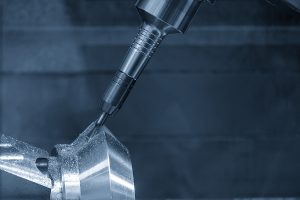A Guide to Thin Wall Machining
Dec 27, 2021
Demand in the aerospace industry is soaring and it shows no signs of slowing down. With so many aircrafts needed in the coming years, precision machining companies are always on the lookout for new ways to improve the efficiency of the manufacturing process and reduce costs without sacrificing quality. It’s a tall order; however, emerging technologies and manufacturing processes are making it possible to not only meet the staggering demand for the custom machined components needed for aerospace applications, but do so with greater precision than ever before. Thin-wall machining is one such machining process.
What is Thin Wall Machining?
As the name implies, thin-wall machining involves milling and turning to produce components with thin-wall characteristics and is a relatively new technique. In aerospace manufacturing, precision parts with tight tolerances are a must. However, reducing the weight of components is also an important part of realizing modern aircraft designs. Therefore, the goal of thin wall machining is to produce parts, many of which have complex geometries, with lighter weights than previous component iterations without sacrificing strength or stability. Additionally, thin-wall machining can significantly speed production time by allowing for the creation of a single setup instead of a multi-phase manufacturing process involving numerous parts.
Challenges Associated With Thin-Wall Machining.
Producing parts with thin walls while maintaining rigidity and dimensional accuracy is a major challenge. Some of the common issues precision machining companies experience when attempting to produce parts with thin-wall characteristics include:
- Structural weaknesses – Thin workpieces can resist exerting tool pressures, making many standard machining techniques ineffective. Any imprecision in the process can result in weakness that compromises the structural integrity of the component.
- Deformation – It is all too easy for parts with thin walls to deform during the machining process. A precise understanding of forces exerted on the workpiece, as well as using the right tooling and workpiece setup, is critical to success.
- Setup inefficiencies – A great deal of consideration into machine setup and workpiece holding is needed to prevent deformation during the machining process. Often, this requires specialized holding equipment.
Additionally, it is not possible for a shop to simply use existing CNC machining equipment to produce thin-wall parts. For example, longer tools suitable for many other CNC manufacturing processes are problematic in thin-wall machining due to excessive deflection and chattering. Not only is specialized tooling needed for thin-wall applications, but also staff need to be specially trained to understand the various forces that are at play. Factors such as tool geometry, speeds, and feeds all require special consideration.
Intrex Aerospace’s Approach to Thin-Wall Machining
When it comes to meeting the aerospace industry’s spiking demand for cost-effective, defect-free components with complex geometries in high volumes, Intrex Aerospace is leading the charge. As a part of Demmer Manufacturing’s portfolio, this precision manufacturing company has access to the technology and people needed to provide parts that utilize the most advanced manufacturing techniques available, such as thin-wall machining. Additionally, Intrex Aerospace has made significant investments in equipment such as 5-axis CNC machines that allow them to provide industry-leading machining flexibility and turnaround times while maintaining unparalleled quality.
To learn more about Intrex Aerospace’s thin-wall machining capabilities, visit the company’s website today.

